In the south of India lies a small mountain range, the Western Ghats, which we got to explore for a few days.
The roads here are windy and convoluted. Buses, cars, rickshaws and bikes all compete with each other for the small bit of road space, honking before passing, and giving right of way to the larger vehicle. Many times on the drive up we saw another vehicle in our lane headed straight for us, but we got desensitized quick. Passing isn’t as dangerous when everyone expects it.
We stayed a little ways out of the town of Munnar along a cliffside overlooking hills of jungle. The Western Ghats provide a great climate for vegetation growth, with the fertile mountain soil, and heavy rainfalls in the summer. We came for these plants, specifically, spices and tea.
We took on a hike for the first day through some tea plantations with Matt and Tom, a couple of Manchester blokes. Our guide was great, taking us through all sorts of local landscape. We went through three different tea plantations, a jungle, and some hilltop grassland overlooking acres and acres of tea.
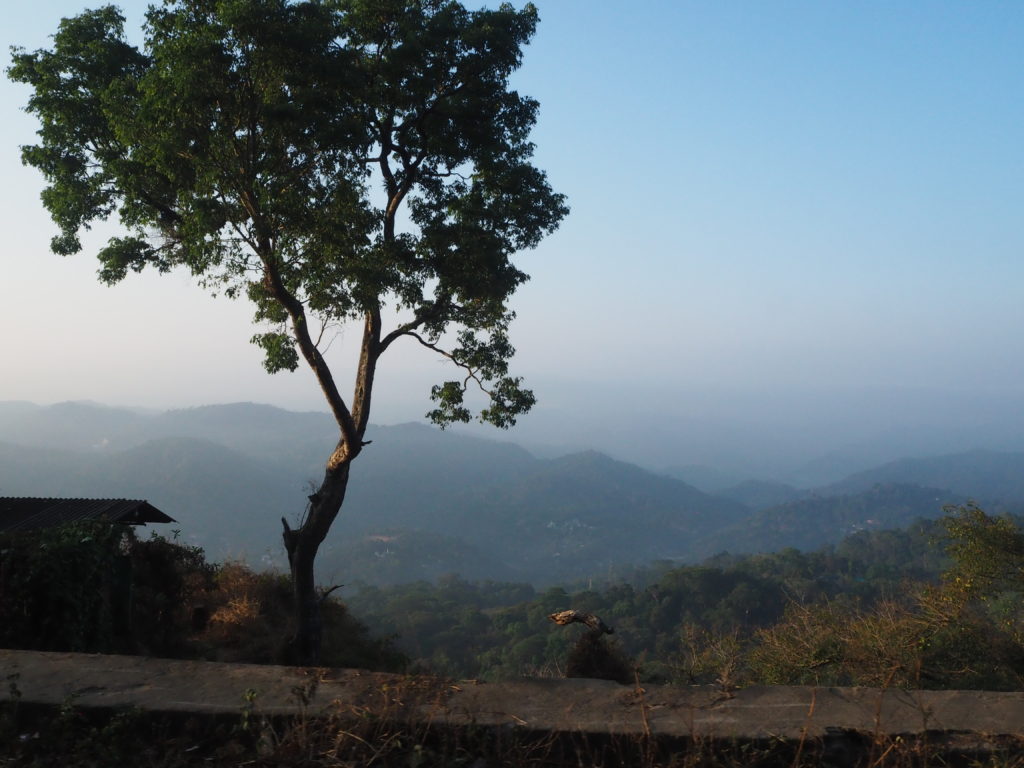

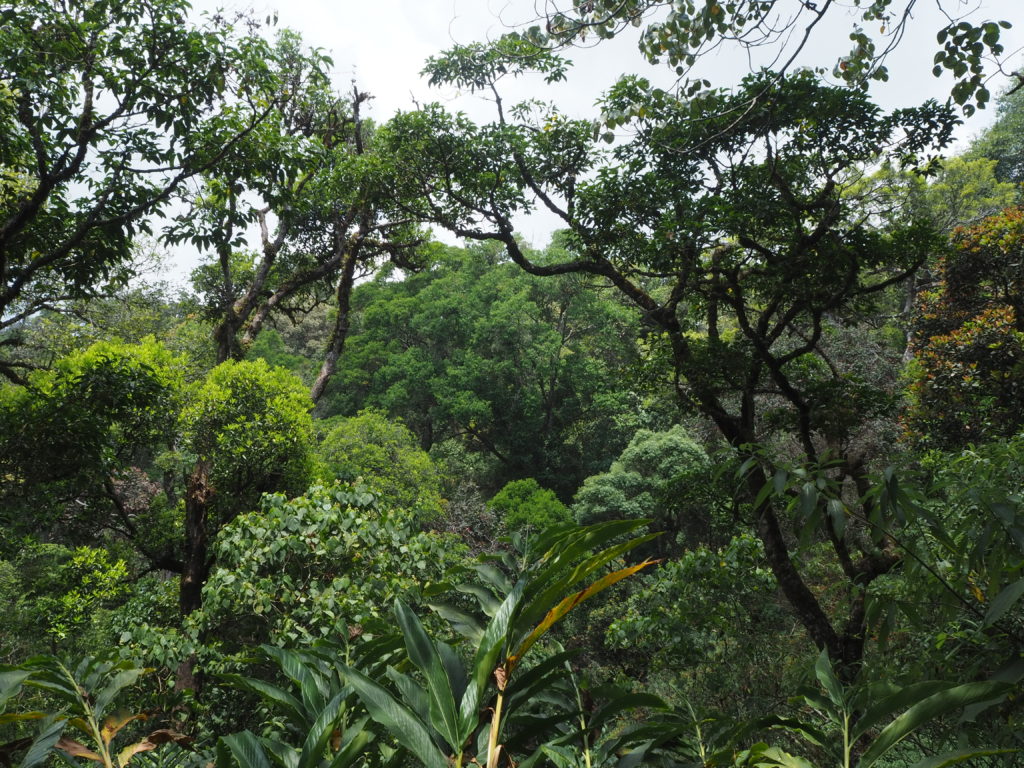


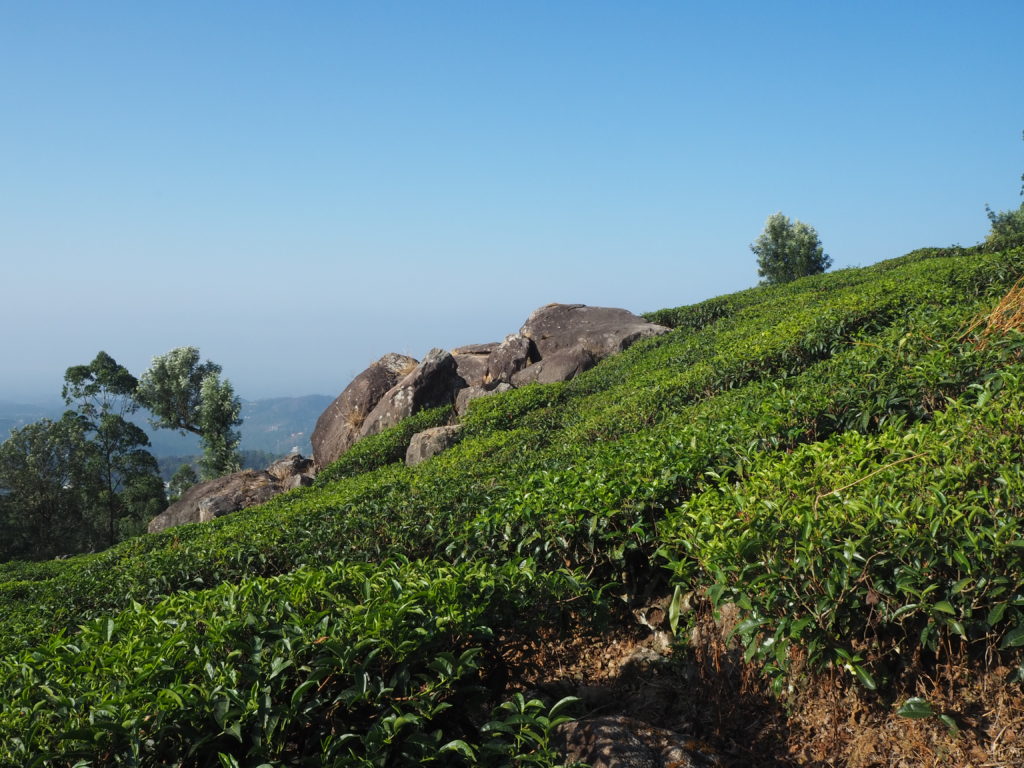
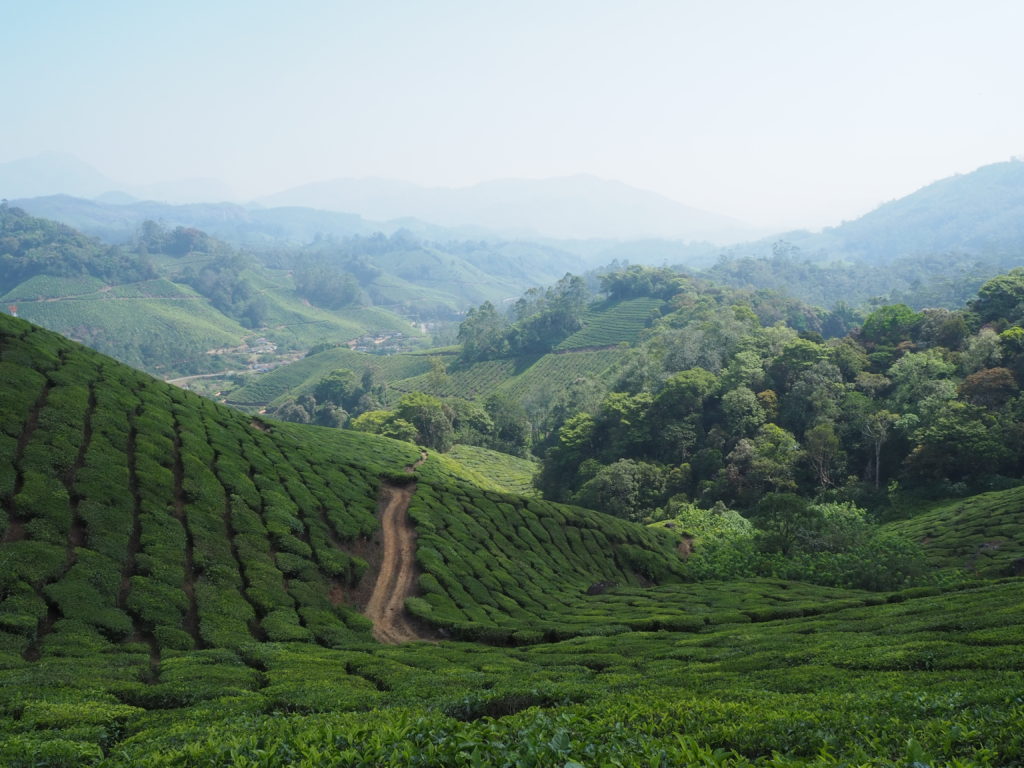

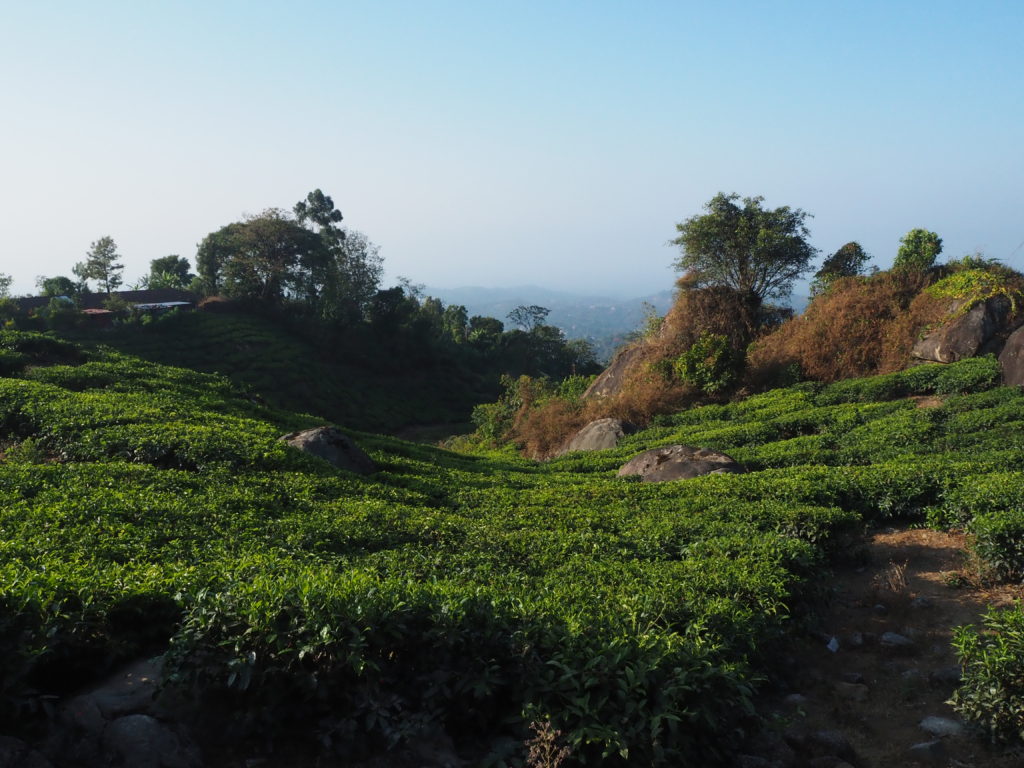
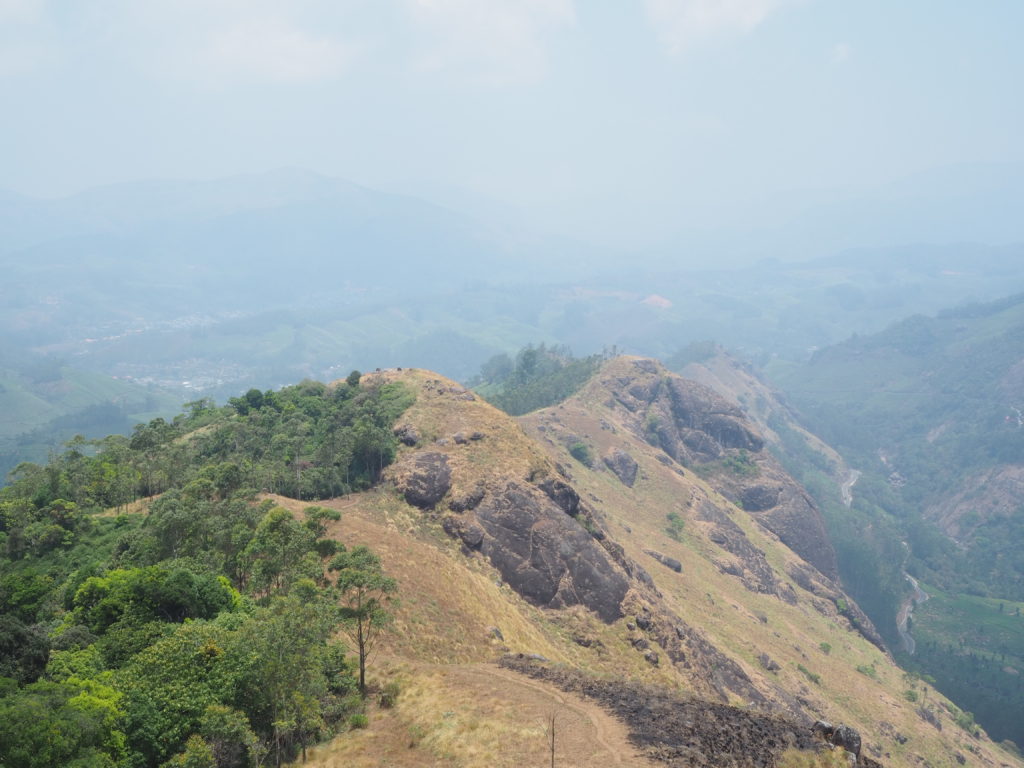



So we learned a few things on the hike. Green, black, and white tea all come from the tea tea plant, but utilize different parts of the leaf and use different processing methods. In Munnar, most of the tea goes to Lipton. So when your getting Lipton black tea, you’re getting the basic standard tea flavored stuff.
The tea gets harvested every couple of weeks. The leaves take approximately 15 days to grow depending on the season. So the workers are in a different parts of the plantation in a 15 day rotation. The leaves are plucked by hand and the workers have huge baskets with umbrellas on their back. The main leaf is used black tea and the buds are used for green and white tea. the new growth is always a very bright green. That green, with the roiling hills make a fantastic view wherever you look.
Evenings here were spent hanging out with different people at the hostel. We met a ton of new friends, and got some good advice on careers and life. The evenings were quite enjoyable each night.
Our second day we went to town and met up with a rickshaw driver, Ramesh. He was fantastic. He wheeled us up to the tea museum, where we got to see a bunch of old stuff, and a small tea factory used for processing the leaves.
For black tea the leaves are ground up a few times to create a powder, then fermented for an hour or so. They then get dried, and sorted to remove fibres (stems). Green teas are steamed first, and I can’t remember what happens to the whites. Flavors like lemon or ginger all get added after. It was cool seeing it all in action.
Ramesh then took us to a vegetarian restaurant that he liked, and we engorged. Kerala restaurant lunches are pretty similar across the board. A thali with 8-10 different curries, some breads, and unlimited rice. I get excited and order pakora’s and other stuff, but it all creates a fantastic meal. The food in Kerala has been really really good.
Ramesh then took us to a spice farm, where we got a quick tour. We got shown a lot of different native plants. Some were spices, like nutmeg, clove and cardamom (apparently cardamom is hard to grow, but its everywhere in the wild? I don’t know). But many others were medicinal plants. Some were for indigestion. Motion sickness. Hair loss. There seemed to be a plant here for everything.
The medicinal plants here are not snake oil. Each one of these has some sort of active ingredient. These active ingredients are synthesized in labs in western medicine. But in India its just easier to extract some oil from leaves for what you need. We got to try some products, like a motion sickness oil which you smell. It worked on Cam real quick.
We also tried a garlic oil. I wasn’t exactly listening. I had too much put on my finger and brought it way too close to my nose for a smell. You know that feeling in your nose when you have a bit of wasabi? Take that, then continue it to the top of your skull. That’s where it went for me. I could feel the outline of my brain for 10 minutes or so. Do sinuses go up there? (According to google, no). Is it something else? What a bizarre sensation.
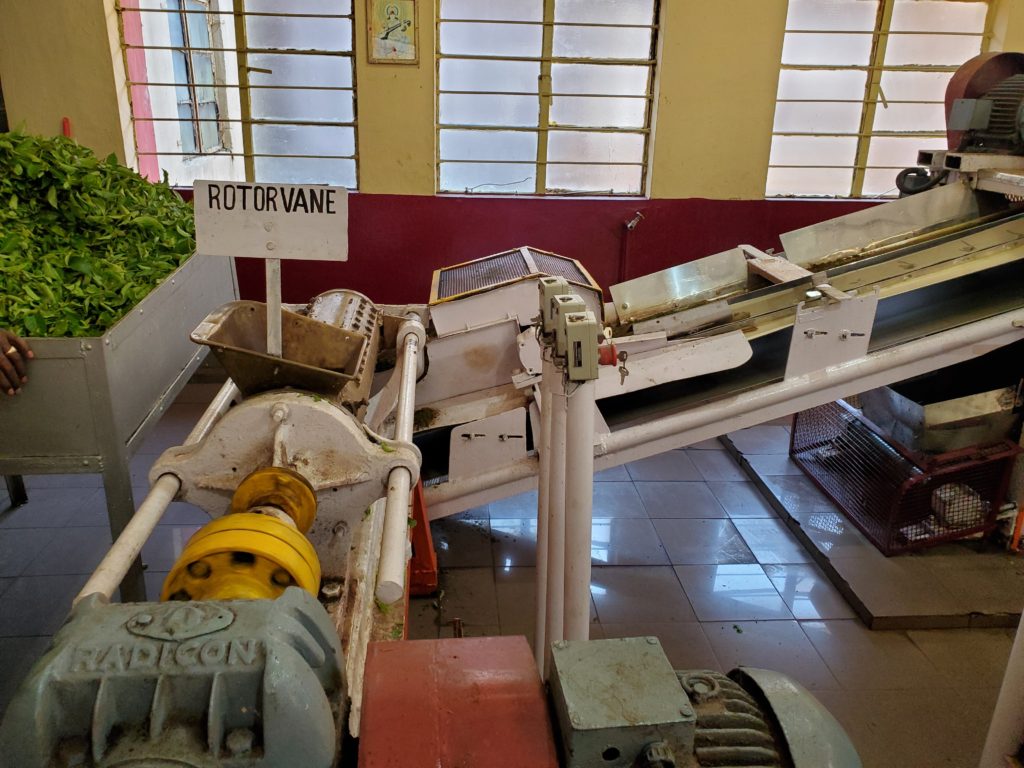
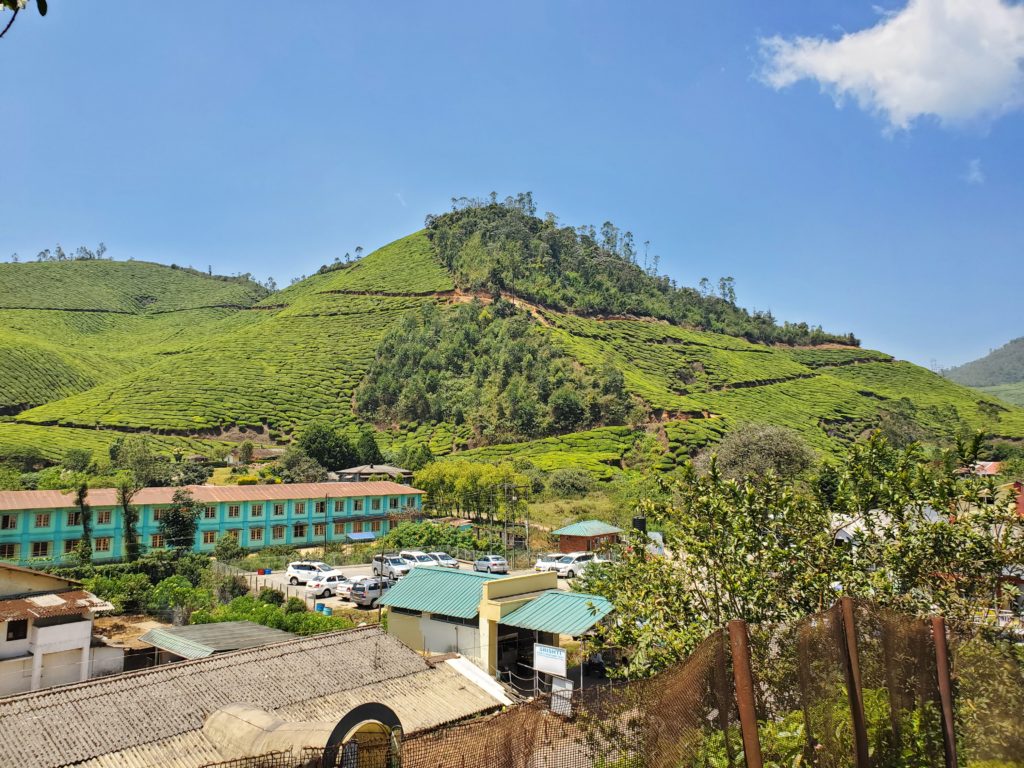

Ramesh dropped us off back at the hostel, and we had another night sharing experiences with new friends. Many have travelled India for a long time, and offered many of their favorite locations to go to. Some that were not on our radar at all (Meghalaya, among others). It was nice to get a whole arsenal of new places to look up, and potentially go n the future.
We’re off to another section of the Westrn Ghat’s now. More of the same, but the same is pretty great at the moment. We will see you there!

Looks beautiful, and no doubt cooler temperatures must be welcome. The multi-spices can be overwhelming to take it all in, fundamental to both Indian diet and ayurveda medicine. Must be interesting to see it up close in all its’ facets, the brain freeze sounds educational of what not to do!
Rickshaws can be fun and very local culture flavor, some of those old guys can still pull a literal ton. Tip big!
Looks beautiful and lush. Did Cam leave clothing behind for some spices?
Yum, yum, yum! Tea and indian food. All is good.